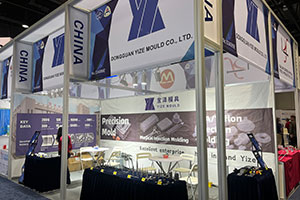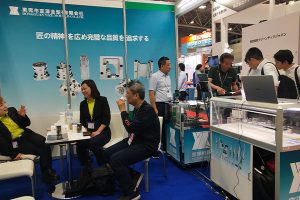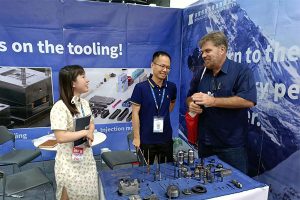Analysis of the Customization Process and Technical Details of Tungsten Carbide Dies
In the vast landscape of precision manufacturing, tungsten carbide dies shine like bright stars. With their high hardness, excellent wear resistance, and outstanding thermal stability, they have become indispensable key […]
In the vast landscape of precision manufacturing, tungsten carbide dies shine like bright stars. With their high hardness, excellent wear resistance, and outstanding thermal stability, they have become indispensable key tools in many industries. The customization of tungsten carbide dies is far from a simple replication process. It requires precise alignment with customers’ production needs, and every step, from ingenious design conception to meticulous manufacturing, demands a focus on technical details to ensure high performance and a long service life of the dies. This article will conduct an in – depth analysis of the customization process and technical key points of tungsten carbide dies, providing a practical guide for relevant practitioners.
Customization Process of Tungsten Carbide Dies: Step – by – Step, Forging Excellence
Requirement Analysis: Precise Insight, Laying the Foundation
The journey of customizing tungsten carbide dies begins with requirement analysis. In this stage, in – depth communication with customers is of utmost importance. It is necessary to comprehensively understand the unique characteristics of the products, such as the complexity of their shapes and precise dimensional requirements. Production requirements, including production efficiency and output volume, as well as the expected service life of the dies, should also be clarified. At the same time, factors such as the production process of the products (e.g., injection molding or die – casting) and the production environment (e.g., temperature and humidity) need to be comprehensively considered. Only in this way can the design scheme and material selection direction of the dies be accurately determined, laying a solid foundation for subsequent work.
Our factory business: carbide parts, mold parts, medical injection molds, precision injection molds, teflon PFA injection molding, PFA tube fittings. email: [email protected],whatsapp:+8613302615729.
Scheme Design: Ingenious Conception, Planning the Blueprint
Based on the results of requirement analysis, the scheme design stage of the dies commences. Scheme design is like drawing a precise engineering blueprint, encompassing the structural design, material selection, and processing technology design of the dies. During structural design, it is essential to closely focus on the shape, size, and precision requirements of the products to ensure that the dies can accurately replicate the products. In the material selection process, appropriate tungsten carbide materials should be carefully selected according to factors such as the use environment of the products (e.g., whether in high – temperature or corrosive environments) and the production batch size. Processing technology design requires determining scientific and reasonable processing technology flow and parameters based on the structure and material characteristics of the dies, providing a clear guide for die manufacturing.
Drawing Preparation: Meticulous Attention, Transforming into Form
Transforming the scheme design into detailed drawings is a crucial leap in the customization of tungsten carbide dies. The drawings need to precisely mark the dimensions, shapes, and positions of each component of the dies, as if building a precise digital model for the dies. At the same time, the drawings should also include key information such as the processing technology flow and technical requirements, enabling processing personnel to operate strictly according to the drawing requirements and ensuring the accuracy and consistency of die manufacturing.

Material Preparation: Selecting High – Quality Materials, Ensuring Quality
According to the drawing requirements, the procurement and preparation of tungsten carbide materials are initiated. During material procurement, it is necessary to select suppliers with excellent reputations and strictly control the quality and performance of the materials to ensure they fully meet the design requirements. In the material preparation stage, pre – processing work such as cutting and grinding needs to be carried out to fully prepare the materials for subsequent processing, enabling them to enter the processing flow in the best condition.
Processing and Manufacturing: Exquisite Craftsmanship, the Core Link
Processing and manufacturing is the core battlefield of customizing tungsten carbide dies. During this process, precise processing and assembly must be carried out strictly in accordance with the drawing requirements. Several key aspects need to be focused on during processing:
- Processing Accuracy Control: Tungsten carbide dies have extremely high precision requirements. High – precision processing equipment and advanced measurement techniques should be used during processing to strictly control the processing accuracy, ensuring that the dimensions and shapes of the dies are precisely correct.
- Heat Treatment Process: Tungsten carbide materials require heat treatment during processing, which is a key step to improve their physical and mechanical properties. The selection and control of the heat treatment process play a decisive role in the performance and service life of the dies. Parameters such as heating temperature, holding time, and cooling rate need to be precisely controlled according to the material characteristics and die requirements.
- Surface Treatment: The surface quality of the dies directly affects the quality of the products and the service life of the dies. Surface treatment, such as polishing to remove surface defects and make the die surface as smooth as a mirror, and sandblasting to enhance the surface roughness and improve the adhesion ability of the die, should be carried out during processing to improve the surface quality of the dies.
Inspection and Acceptance: Strict Quality Control, Ensuring Compliance
After the processing and manufacturing are completed, the inspection and acceptance stage begins. This stage is like a comprehensive “physical examination” for the dies, including dimensional inspection, where high – precision measurement tools are used to accurately measure each dimension of the dies; surface quality inspection to check for defects such as scratches and cracks on the die surface; and functional inspection to simulate the actual production environment and verify whether the die functions normally. Only dies that meet all the requirements can pass the inspection and be delivered to customers.
Delivery and Use: Thoughtful Service, Ensuring Operation
After passing the inspection and acceptance, the dies are delivered to customers. During delivery, detailed operation manuals and maintenance guides should be provided to customers, acting as a “die – use bible” to help customers correctly use and maintain the dies. At the same time, a comprehensive after – sales service system should be established to promptly solve the problems encountered by customers during use, eliminating their worries.
Technical Details Analysis: Delving into Skills, Enhancing Quality
Material Selection: Choosing the Best, Adapting to Needs
The material selection of tungsten carbide dies is a key factor affecting the performance and service life of the dies. Commonly used tungsten carbide materials include W18Cr4V, W6Mo5Cr4V2, and W18Cr4VCo5. These materials are like different “personalities”, each with unique chemical compositions and physical properties, suitable for different production environments and product requirements. When selecting materials, factors such as the use environment of the products (e.g., whether under high – load or in contact with corrosive media) and the production batch size should be comprehensively considered to select the most suitable materials.
Structural Design: Scientific Layout, Optimizing Performance
The structural design of tungsten carbide dies is the core element to ensure die performance and service life. During structural design, factors such as the shape, size, and precision requirements of the products, as well as the stress conditions and working environment of the dies, should be fully considered. Through reasonable structural design, such as optimizing the parting surface of the die and strengthening the supporting structure of the die, the stress state of the die can be optimized, and the rigidity and stability of the die can be improved. At the same time, attention should be paid to the ease of processing and maintainability of the die, adopting modular design concepts to facilitate subsequent processing and maintenance.
Heat Treatment Process: Skillful Regulation, Performance Enhancement
The heat treatment process is a powerful tool to improve the performance of tungsten carbide dies. Through heat treatment, the internal structure and properties of tungsten carbide materials can be changed to improve their hardness, wear resistance, and toughness. Commonly used heat treatment processes include quenching to obtain high hardness and wear resistance, tempering to eliminate quenching stress and improve the toughness of the material, and aging to stabilize the dimensions and properties of the material. During the heat treatment process, parameters such as heating temperature, holding time, and cooling rate need to be strictly controlled, just like a chef controlling the heat, to ensure the best heat treatment effect.
Surface Treatment: Striving for Perfection, Extending Service Life
Surface treatment is an important means to improve the surface quality of tungsten carbide dies. Through surface treatment methods such as polishing and sandblasting, defects such as burrs and rust on the die surface can be removed, and the surface smoothness and roughness of the die can be improved. At the same time, surface treatment can form a protective layer on the die surface, improving the wear resistance and corrosion resistance of the die and extending its service life. For example, the chemical nickel – phosphorus plating process can form a uniform and dense coating on the die surface, enhancing the surface performance of the die.
Conclusion: Striving for Excellence, Building Together
The customization of tungsten carbide dies is a complex and meticulous systematic project, where every link is closely connected, and every technical detail is crucial to the final quality. Through scientific and reasonable requirement analysis, ingenious scheme design, strict material selection, clever structural design, precise heat treatment process control, and exquisite surface treatment, high – performance and long – service – life tungsten carbide dies can be created. During the processing, manufacturing, and inspection and acceptance processes, a rigorous attitude and superb skills are required to strictly control the processing accuracy and quality, ensuring that all indicators of the dies meet or even exceed customer requirements. Only in this way can high – quality tungsten carbide die products be provided to customers, meeting their diverse production needs and standing firm in the fierce market competition.
Related Posts
- Detailed Explanation of the Customization Process for Tungsten Carbide Dies
- Future Development Trends and Market Demands of Tungsten Carbide Die
- Analysis of the Customization Cycle of Tungsten Carbide Dies
- Analysis of the Application Characteristics of Tungsten Carbide Dies in Electronic Product Manufacturing






